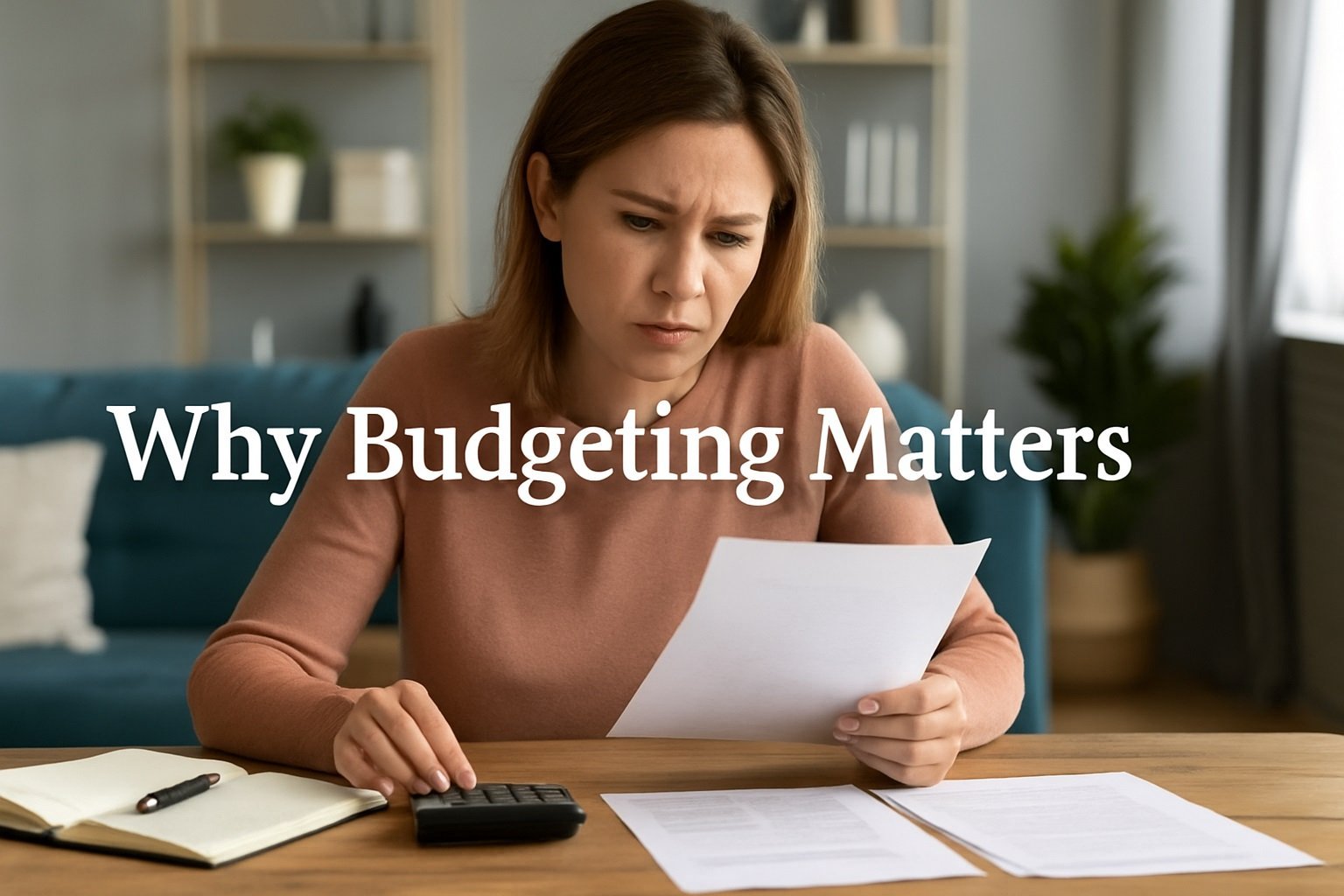A budget plan is a written roadmap for how you will earn, spend, and save money over a specific period, most often one month. Instead of guessing where the cash disappears, you decide in advance what every rupee or dollar should do. That clarity turns financial chaos into calm, shrinks stress, and keeps long-term goals from slipping through the cracks.
In this article you will discover a simple, proven framework drawn from the highest-ranking personal finance guides on Google. By the end you will know how to calculate true take-home income, choose a budgeting style that fits your life, automate the boring parts, and keep the whole plan humming month after month. Along the way you will see answers to the questions real readers ask every day, so nothing stops you from mastering your money.
What Counts as Real Take-Home Income and How Do You Find It?
Knowing exactly how much money actually lands in your account each month is step one. Many people rely on their gross salary figure, yet social security contributions, retirement deductions, health insurance premiums, and taxes disappear before you ever see them. That means a budget built on gross pay will always crack under pressure.
-
Pull the last three months of bank statements. Add up only the amounts that hit your account after payroll deductions.
-
Include side gigs and irregular sources. Freelance projects, dividend payments, or rental income still count, but average them across several months to iron out ups and downs.
-
Subtract one-off windfalls. Annual bonuses and tax refunds are best earmarked for goals rather than everyday expenses, so keep them out of core income figures.
Write down the final number. This is the engine that powers your entire spending plan.
Which Budgeting Style Fits Your Personality Best?
No two personalities treat money exactly the same. The best guide to creating a budget plan is the one that feels friction-free enough to sustain week after week. Four common frameworks dominate the personal finance world.
| Budget Style | Perfect For | Core Rule | Pros | Cons |
|---|---|---|---|---|
| 50-30-20 Rule | People who want broad guardrails, not micromanagement | 50 percent needs, 30 percent wants, 20 percent savings-debt goals | Quick to set up, flexible, easy mental math | Hard-to-spot category overspending may underfund aggressive goals |
| Zero-Based | Planners who enjoy detail and total control | Every rupee is assigned a job until nothing remains unallocated | Crystal clarity, great for crushing debt and big savings targets | Takes time; can feel restrictive without periodic reviews |
| Envelope (Cash-Stuffing) | Visual, tactile learners who overspend with cards | Physical envelopes or app buckets for each category | Overspending is physically impossible when envelope is empty | Requires cash handling or diligent app updates |
| Pay-Yourself-First | Busy earners who automate everything | Savings transfers happen before bills or lifestyle costs | Builds wealth on autopilot with minimal effort after setup | Without watching variable expenses, lifestyle creep sneaks in |
Step-by-Step: Building Your First Budget
1. Track Expenses for a Full Month
Spend normally, but capture every rupee. Use an app or a simple spreadsheet. Split payments by category – rent, groceries, transport, entertainment, and so on. This snapshot tells you where leaks lurk.
2. Categorize Needs, Wants, and Goals
-
Needs – Non-negotiables like housing, utilities, basic food, medicines, and minimum debt payments.
-
Wants – Dining out, streaming subscriptions, gym memberships, and the new phone upgrade.
-
Goals – Emergency fund, travel savings, investment contributions, extra loan payments.
Clarity here reduces guilt later because each category has an explicit purpose.
3. Assign Targets Based on Your Chosen Style
If you love simplicity, use the 50-30-20 split. If you crave control, drop each expense into a zero-based grid until the balance is zero. The framework matters less than your commitment to stick with it.
4. Plug the Gaps
When the math shows spending outpacing income, you have three levers:
-
Reduce wants – Trim restaurant visits or pause a subscription.
-
Negotiate essentials – Reshop car insurance, refinance loans, and switch to energy-efficient bulbs.
-
Boost income – Pick up a side job for a season or sell idle items online.
A balanced budget always uses at least two levers, so the adjustment pain feels smaller.
How to Automate Bills, Savings, and Debt Repayment
Automation removes willpower from the equation.
-
Schedule salary-day transfers. The moment income arrives, automatic rules move fixed rupee amounts to savings and investment accounts.
-
Set calendar-day bill payments. Align due dates with pay cycles to avoid late fees. Banks often change billing cycles when asked.
-
Use round-up micro-savings apps. Every purchase rounds to the nearest ten and shuttles the spare change into an investment fund. Tiny amounts grow silently in the background.
-
Enable credit card autopay in full. This hack prevents interest charges while still harvesting reward points.
Automation frees brain space, making your guide to creating a budget plan feel lighter after the initial setup.
Keeping Your Budget on Track Month After Month
Consistency beats intensity. Here is a mini maintenance checklist:
-
Weekly pulse check – ten minutes. Glance at category balances and adjust for any surprise expenses immediately.
-
Monthly review – thirty minutes. Compare actual spending against targets, roll unused amounts into savings goals, and reallocate excess spending from nearby categories instead of pulling from savings.
-
Quarterly big picture – one hour. Look at net worth growth, revisit income changes, and tweak targets upward as you progress.
-
Annual goal refresh. Did you clear a loan or hit an emergency-fund milestone? Add fresh goals that excite you for the next twelve months.
Treat the process like routine car maintenance rather than an audit, and motivation stays high.
Definition & Core Purpose
Think of a budget plan as a master script you hand to every rupee before it steps onto the stage of your bank account. It is not merely a running list of upcoming bills; it is a forward-looking strategy that assigns specific roles to income so nothing drifts away unnoticed.
-
Allocation with intention – Instead of wondering where money vanished, you decide up front how much flows into rent, groceries, investments, hobbies, and even guilt-free treats.
-
Built-in guardrails – Because each category has a preset limit, any overspend in one area forces a conscious reduction elsewhere. Trade-offs happen on paper before they happen in life.
-
Goal tracking in real time – By linking every rupee to a priority, you watch emergency funds grow, vacations inch closer, and debt shrink. Progress is no longer abstract; it is a line item you can celebrate.
Key takeaway: A budget plan answers the question, “What should my money do next?” before the paycheck arrives, replacing reaction with direction.
| Core Job of a Budget | Practical Example | Positive Ripple Effect |
|---|---|---|
| Allocate income | Channel 15% of every pay cheque to a high-yield savings account | Emergency fund reaches three months of expenses within a year |
| Prevent overspending | Limit dining-out to ₹5,000 per month | Avoids credit-card balances that accrue interest |
| Track goals | Set automated transfers for travel fund, student-loan extra payments, and a new laptop | A clear visual of progress keeps motivation high |
The beauty of this setup is flexibility. If you value weekend adventures, you can funnel more toward travel and less toward entertainment subscriptions. The plan does not lock you in; it simply shines a light on every trade-off so you act with purpose.
Why Budgeting Matters

Lifestyle costs have a habit of expanding until they match, or even exceed, income. Without guardrails, impulse purchases pile up on a credit card, savings goals stall, and financial anxiety grows. Budgeting flips that script by turning vague intentions into concrete rules you write for yourself.
-
More savings with less stress
A written budget ensures that savings happen first, not last. Each time you automate a transfer to investments or an emergency fund, you remove willpower from the equation and lower stress because the important stuff is already handled. -
Debt decline, confidence rise
When overspending is capped, you stop adding to balances and can finally attack what you owe. Seeing debt totals fall month after month builds confidence that money is a tool, not a tyrant. -
Better decision speed
Big purchases no longer require mental gymnastics. You simply check your categories. Enough in “Home Upgrades”? Great, buy the new desk. Category empty? Delay or adjust. Quick decisions free up mental bandwidth for what matters most. -
Future-proofed lifestyle
Budgeters routinely report larger retirement portfolios and sturdier emergency cushions. By linking today’s rupees to tomorrow’s lifestyle, you safeguard against job loss, medical bills, or market swings without scrambling. -
Improved relationships
Money conflict is a top cause of tension among partners. A shared plan turns disagreements into joint problem-solving sessions because both parties see the same numbers and rules.
Bottom line: Budgeting is not about restriction; it is about clarity. When every rupee has a purpose that aligns with your values, you gain freedom – the freedom to spend without guilt, save without fear, and pursue goals without guesswork.
Step 1: Calculate Your Net Income
Identify all money that truly reaches your wallet after taxes and deductions. For salaried workers, that is the figure marked “net pay” on the payslip. Gig workers should total paid invoices, app transfers, and tips that clear the bank. Include rent from roommates, government stipends, dividend cheques or anything predictable enough to count on. Sum these numbers to create one reliable monthly net income figure.
If you earn in bursts, say, wedding-season photography or quarterly commissions, add together the lowest six to twelve months from the past year, divide by that same number of months, and use the result as your baseline. When a busy season or bonus cheque hits, treat the surplus as a windfall for goals rather than folding it into everyday spending. This conservative approach shields your budget plan from income droughts.
Step 2: Track Your Current Spending – “Where Is the Money Going?”
First, separate fixed expenses from variable ones. Fixed costs stay roughly the same: rent, mortgage, insurance premiums, EMIs, and streaming service annual fees. Variable costs rise or fall: groceries, fuel, utilities, coffee runs, late-night take-away. Pull the last 30 days of transactions and drop every charge into one of these buckets. The result is a clear picture of cash leaks you may never have noticed.
Manual tracking in a notebook works, but apps save time. Most banks auto-tag purchases into categories. Tools like YNAB, PocketGuard, or a shared Google Sheet let you import transactions and label them fast. Choose whichever system you will actually open every week; the habit matters more than the tech.
Step 3: Set SMART Financial Goals
Short-term goals (three to twelve months) build quick wins. Examples: build a starter emergency fund equal to one month of costs, wipe out a ₹15 000 credit card balance, or save ₹20 000 for a festival trip. Make each one SMART: specific, measurable, achievable, relevant, and time-bound. “Save ₹25,000 for an emergency cushion by March 31” is clear, trackable, and motivating.
Long-term goals (one to five years) might include a house down-payment, a dream wedding, funding a master’s degree, or maxing retirement contributions. Break large targets into monthly or quarterly milestones so progress feels tangible. Link each goal to a personal value (family security, freedom to travel, and career advancements) so sacrifices feel like choices, not punishments.
Step 4: Choose a Budgeting Method
| Method | Quick Formula | Best For | Potential Drawbacks |
|---|---|---|---|
| 50/30/20 Rule | 50% needs, 30 % wants, 20 % savings or debt | Beginners who value simplicity | May squeeze those in high-cost cities |
| Zero-Based Budget | Income – expenses = 0 | Detail-oriented planners or tight margins | Requires diligent tracking of every rupee |
| Envelope System | Fund each envelope on payday | Impulse spenders who like tactile controls | Physical cash or multiple app “envelopes” can feel clunky |
Pick the framework that matches your personality. A stable-salary earner often loves the 50/30/20 split. Someone juggling freelance gigs might prefer zero-based precision. Shoppers prone to tap-and-swipe temptation do well with envelopes that slam shut once empty. Remember: the “best” method is whichever one you will stick with month after month.
Step 5: Build Your First Draft Budget
Start by writing down essential costs: housing, utilities, groceries, transport, and insurance premiums. These protect survival. Next, list lifestyle upgrades such as cafés, subscriptions, and hobbies. Finally assign slices of income to savings and extra debt payments. If numbers refuse to balance, trim wants first, then hunt minor savings in needs, but leave automatic transfers to goals untouched. This order keeps current security and future plans intact.
High-interest debt acts like a hole in the bucket, so tackle it aggressively. Pay more than the minimum on the account with the highest rate while still covering every other bill. At the same time, grow an emergency fund equal to at least one month of core costs so unexpected repairs or medical bills do not force more borrowing.
Step 6: Automate & Implement
Schedule transfers from checking to savings or investments for the morning after payday. Enable auto-pay on credit cards and utilities to dodge late fees. Layer low-balance and upcoming-bill alerts inside your banking app. Some platforms even allow you to round up each purchase and drip the spare change into mutual funds, growing wealth invisibly in the background. By moving tasks from memory to automation, you protect progress on busy days when willpower is low.
Step 7: Review and Adjust Monthly – “How Do I Keep My Budget on Track?”
Set a calendar reminder for the last evening of each month. Open your tracker and compare planned versus actual figures. Ask three quick questions:
-
Did any category overshoot its limit?
-
Did income shift up or down from expectations?
-
Did I advance toward each goal on schedule?
Log the answers. If groceries overshoot by ₹1 000 every time, raise that line and shave an equal amount from a lower-priority category such as take-out. If a new recurring cost appears, say, a cloud-storage plan, find a matching reduction elsewhere before it snowballs. Tiny, consistent tweaks keep your budget plan realistic and sustainable without wholesale overhauls.
Following these seven steps creates a living roadmap that directs every rupee with purpose, cushions you from surprises, and propels you toward the milestones that matter most.
Pro Tips to Stay Motivated
Accountability partners or a budget buddy
Money habits stick better when someone is watching your back. Share your spending limits and savings goals with a friend, partner, or sibling who will celebrate tiny wins and call out creeping expenses. A quick Sunday text that says “Groceries 📉, coffee runs 📈” can realign you faster than any push notification.
Celebrate milestones without blowing the budget
The brain loves rewards. Mark each finished goal with something fun yet pocket-friendly. Try a home-made pizza night, a sunrise hike, or a marathon of comfort films. Linking achievement to low-cost treats builds positive feedback without erasing the progress you just made.
Leverage windfalls wisely
Bonuses, festival gifts, tax refunds, and surprise freelance payouts can feel like play money. Decide on a split before the cash lands. Many people like a 70–30 rule: channel seventy percent directly into a strategic target such as an emergency fund, investing, or debt knockout, and give yourself thirty percent for guilt-free enjoyment like new headphones or a weekend road trip. Pre-decisions stop impulse buys in their tracks and keep long-range dreams on schedule.
FAQ – People Also Ask
| Question | Concise Answer |
|---|---|
| Why do I need a budget plan? | It gives you control over cash flow, removes guesswork, and speeds up progress toward financial goals. |
| What is the 50/30/20 budgeting rule? | Allocate fifty percent of net income to needs, thirty percent to wants, and twenty percent to savings or debt payoff. |
| How can I stick to a budget if my income is irregular? | Base the plan on your lowest recent-earning month, maintain a buffer fund, and adjust figures every quarter. |
| Which budgeting app is best for beginners? | Choose an app that syncs bank accounts automatically and supports your chosen method, for example, a zero-based or envelope style. |
| How often should I update my budget? | Review at least once a month and refine any time you experience a major life or income change. |



